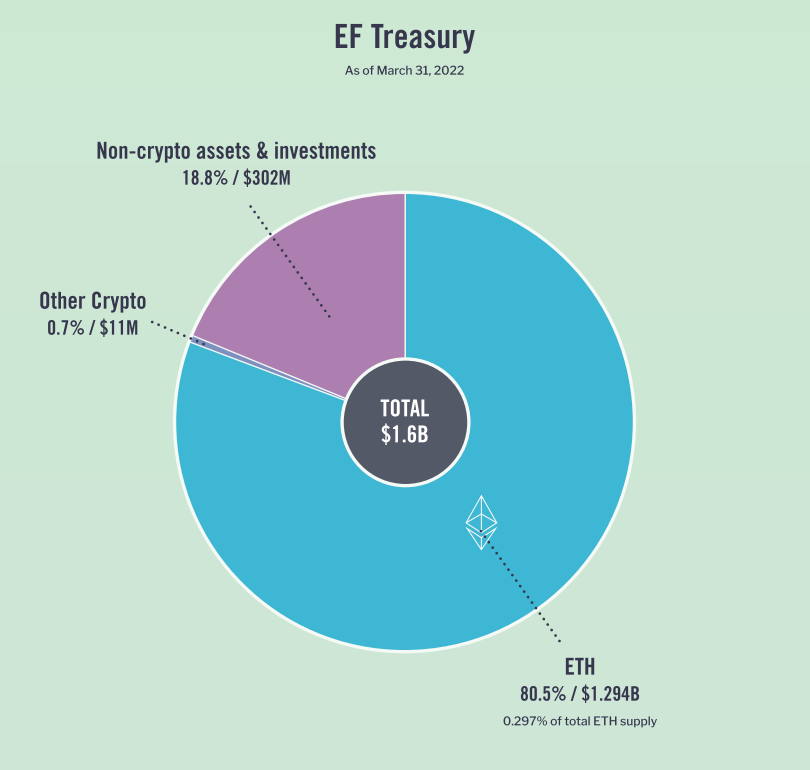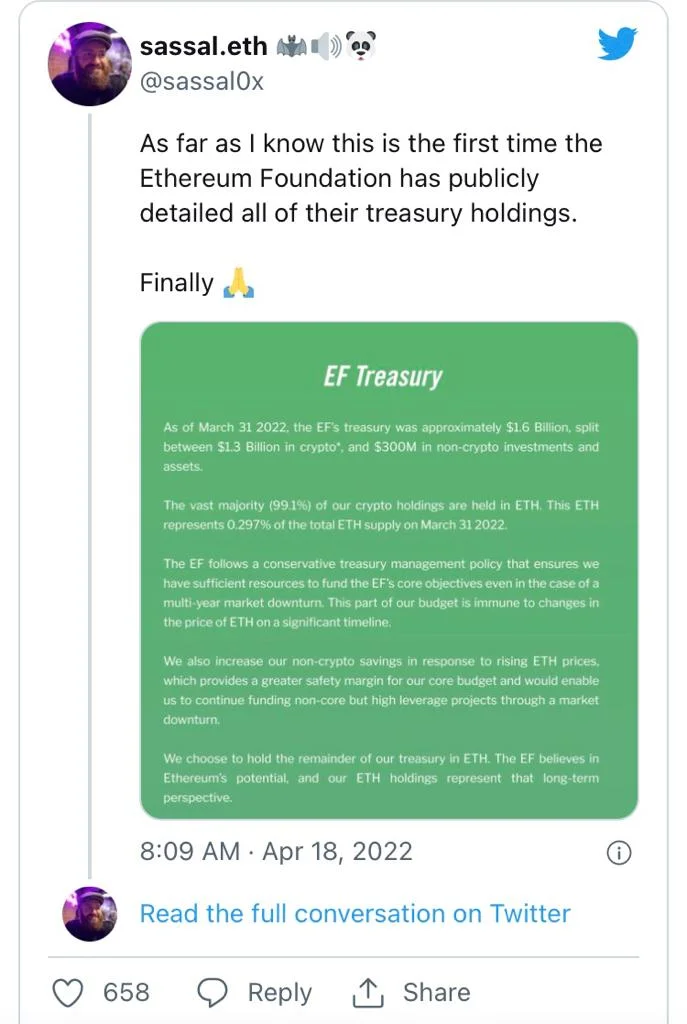It has been revealed that the Ethereum Foundation which is in charge of overseeing and funding Ethereum network development has a sizable stake in non-crypto assets.

The Ethereum Foundation (EF) has released a report detailing how its $1.6 billion treasury is mostly made up of Ether (ETH), bu t it also includes a surprising 18.8 percent in non-crypto assets.
In total, the EF non-profit organization, which manages funds for Ethereum development, owns approximately 0.3 percent of the current total ETH supply, amounting to approximately $1.3 billion, as verified by Etherscan. Its non-crypto holdings, on the other hand, account for a sizable $302 million share.
The Foundation’s April 2022 report is the first to outline what it has in its treasury and how it is allocating expenditures, including grant funding for various Ethereum-based projects. Overall, the EF appears to be on the solid financial ground, having spent only $48 million in 2021.

According to the report, it has increased its non-crypto holdings to $302 million from an undisclosed amount previously. That sum is intended to provide “a greater safety margin” to protect it from a crypto market downturn.
The Foundation did not immediately respond to a request for information about its non-crypto holdings. In an April 18 tweet, Ethereum researcher Justin Drake suggested that the non-crypto holdings are simply fiat reserves.

Last year, the Foundation spent $21.8 million on layer-one (L1) research and development, which accounted for the majority of its expenditures. This total excludes the Client Incentive Program (CIP), which is an ongoing program that rewards nine specific node operators with a fixed share of 39,168 ETH ($132 million) regularly.
It also spent $9.7 million on community development, $5.9 million on Ethereum as a developer platform, $5.1 million on international operations, $3.6 million on ZK (zero-knowledge) R&D, and $1.9 million on layer-two (L2) R&D.

The EF’s financial report comes just a few months before The Merge when the Ethereum main net will switch to a proof-of-stake (PoS) consensus algorithm. This is expected to significantly reduce the network’s energy requirements as well as its carbon footprint.
